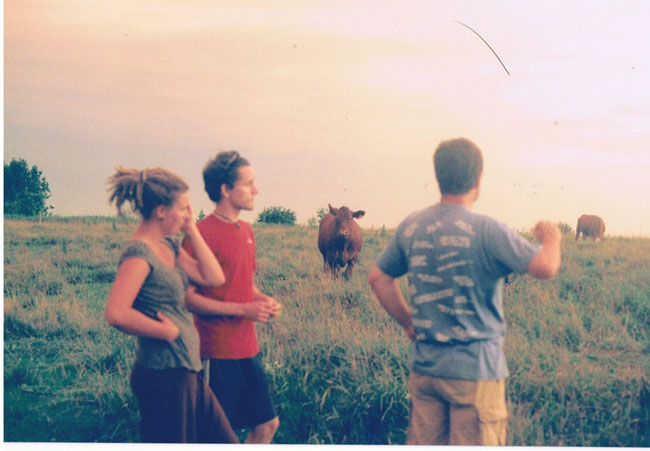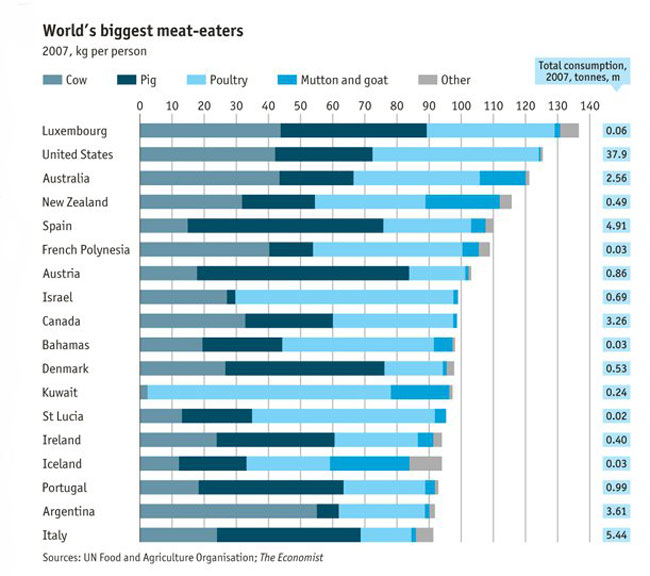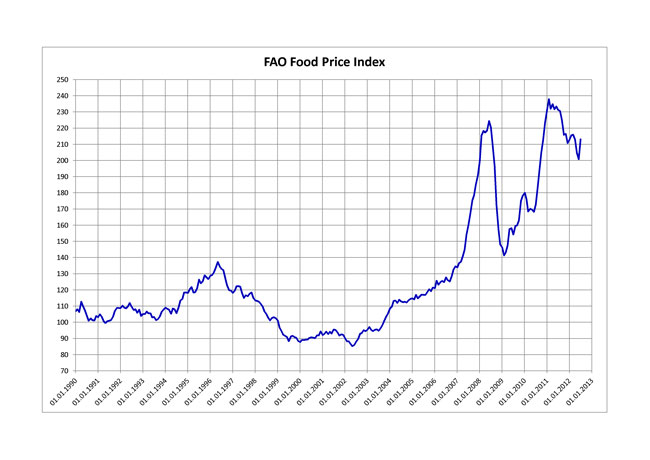Originally published at House of Friendship.
MY FAMILY MOVED onto a small-ish farm in Southern Ontario the year I entered kindergarten. We are now certified Organic, and mainly produce spelt and grass-fed beef. At different points we’ve had pigs, chickens, sheep, and a small army of barn cats.
Originally published at House of Friendship.
MY FAMILY MOVED onto a small-ish farm in Southern Ontario the year I entered kindergarten. We are now certified Organic, and mainly produce spelt and grass-fed beef. At different points we’ve had pigs, chickens, sheep, and a small army of barn cats.
On the one hand, I have always been proud of what we do. We don’t look or farm like our neighbours. We have more weeds – thistles as big as me, sometimes. Instead of pesticides and fertilizer, we practice forms of crop rotation I’ve always believed to be kinder to the earth. Our practices are more labour intensive, and a bit less dependent on fossil fuels. I know that some of our neighbours don’t even consider what we do “real farming.” Usually, however, comments like that only reinforce that we are doing something different, and that we – and farms like ours – represent something more sustainable and just, a method I’ll call agro-ecological farming.

Some of the animals in my family \ Jesse Bauman
On the other hand, aren’t these “real farmers” making an important point? Couldn’t we be farming more efficiently? Shouldn’t we? It’s easy to pick on these neighbours: they are farming more conventionally and industrially, and thus responsible for so many environmental evils. Right? Unfortunately, it’s often hard to find room for nuance on my moral high-horse. In reality, my family makes a sort-of living – my parents both work off farm – by selling a niche product to upper-middle class consumers. From this perspective, our farm looks less like a real alternative to our factory farming neighbours, and more, perhaps, like an irresponsible use of resources in a hungry world.
No more Malthus!
I was therefore quite happy to wear two hats at Ryerson University’s recent conference, Feeding Cities 2014: Rural-Urban Connections and the Future of Family Farming. Depending on your ideas about family farming and the causes of food insecurity – here and abroad – their choice of focus might seem like an odd and dangerous bit of traditionalism. My starting assumption was that few view the “family farm” as the high-tech, high-yield, scaled-for-efficiency solution to hunger that our growing population requires. This, anyway, is how some policy makers and/or agribusiness construct the problem. As Malthus put it: “the power of population is indefinitely greater than the power in the earth to produce subsistence for man.” In other words, exponential population growth outstrips food production, and so more and more people are hungry.
Hunger: distribution or production or both?
This makes a certain amount of sense, but history has proven and continues to prove that science and technology provide solutions to grow the supply of food faster than the increase in the number of new people who want to eat it. Globally, we already have enough food; and we can produce what we need far more sustainably.
So why are people hungry? Most straightforwardly, because they don’t have enough food. And why? Here it gets trickier.
Hunger is rarely the result of food shortages, but rather a political or distributional problem.
The Food and Agriculture Association of the United Nations (FAO) conservatively estimates that 842 million people were chronically hungry last year. (This number is conservative because it is based on an individual’s minimum caloric intake: the calories they need to stay nourished if they are sitting around all day.) Regardless of the exact number, too many people are chronically hungry.
At the food hamper program we are obviously dealing with hunger. On the face of it, however, food insecurity in Kitchener-Waterloo seems different from food insecurity in the global south. Farmland in Southwestern Ontario is some of the richest and most productive in the world. Nationally, we produce huge amounts of food, usually as commodities. In 2012 the Canadian “agriculture and agri-food system” (AAFS) generated $103.5-billion, including $43.6-billion worth of exports and $32.3-billion worth of imports. These are huge, and in my head, basically incomprehensible numbers. But one point is clear: we produce a lot of food in Canada. So much, in fact, that we have an $11-billion trade surplus, meaning we export that much more than we import.
RELATED: Students Stick a Fork in Hunger
Food insecurity in Canada – the Land of Milk and Money – does not appear to be a supply problem.
But (and here’s the more interesting point) food insecurity in the less affluent/developing/Third World countries is not straightforwardly a “problem” of supply and demand either. A person might starve to death because no food is immediately available to them. On the face of it, this looks like a supply problem: there’s no food! But that’s only the last chapter of a long and complicated story.
Professor Haroon Akram-Lodhi presented at the conference on “why we need a new food system.” On the issue of global hunger, he emphasized two major points.
First, and perhaps most importantly: we already have enough food to feed the 10 billion people we expect to be around by the year 2100. This does not mean, however, that there is always food where it’s needed, when it’s needed. Sometimes food rots in silos nearby people starving to death. This is the extreme example. More commonly, less affluent countries with limited domestic food production cannot afford the food they need. “The FAO estimates that each year, approximately one-third of all food produced for human consumption in the world is lost or wasted.” Which brings me to Professor Akram-Lodhi’s other point….
Food crises and/or famines exist because hungry people cannot afford to buy food and because food is getting more expensive. (See graph above.) Hunger is rarely the result of food shortages, but rather a political or distributional problem: existing food supplies do not reach those who need them.
Is this something new? I believe that if I sat 10 people together and asked them why people are hungry, many of them would never mention distribution problems being the issue. The stories we are generally told about famine – and more generally, mass suffering – focus on deprivation/absolute scarcity/terrible disasters beyond human control – what insurance companies like to call “acts of God.” These stories, and the accompanying images of starving children with swollen bellies, make it easier to imagine hunger as a supply problem. The food does not exist, in other words. I think this way of thinking about hunger also makes it more difficult to see how our actions relate to hunger crises in other, less wealthy countries.
Too much food, not enough money
There are multiple, overlapping, complicated reasons why food is (increasingly) expensive. The World Bank estimates that bio-fuels pushed up global food prices by 75% and financial speculation in food markets is on the rise (and so, some argue, is price volatility). Between 2008 and 2011, the value of financial assets in food markets more than doubled, and increasing meat consumption creates demand for, and pushes up the price of, grain which is for many reasons “not the best use of our scarce natural resources.” Although much is made of middle-income countries’ “meatification,” it is still mainly Western countries that consume meat at the highest levels:

Professor Akram-Lodhi described these three factors (bio-fuels, financial speculation and meat consumption) as different aspects of a “corporate food regime.” Considered separately or together, they illustrate how a complex market does a much better job of making money than ensuring that food gets to those who need it. (Here is one obvious connection between food security here and abroad.)
Free markets and hunger: profits before people?
So how does the family farm fit into this story of rising prices and global food insecurity?
It doesn’t (so long as family farms are not a part of the “corporate food regime”), and that’s the point.
Finance speculates on the commodity market, which is the domain of agribusiness. Agribusiness produces the astounding quantities of corn turned into bio-fuel. And for the most part, the meat we eat, and can afford to eat in such vast quantities in the West, comes from large factory farming operations. A large and complicated system of production and distribution has grown up around and in response to agribusiness, and this system seems to tend towards increasing food prices. (This system tends towards a lot of other things, as well.)
You are the market
Agribusiness responds, for the most part rationally, to our demands.
Yes, I’m overstating and simplifying this story, placing all the blame for high food prices and food insecurity on so-called factory farms. Agribusiness responds, for the most part rationally, to our demands. This is what I mean when I say corporations in a free market do a better job making money than fairly distributing food. I continue to eat a bit of meat, and most of us drive pretty much everywhere. Until these things change, enterprising individuals will present us with novel ways to consume meat or bio-fuels or whatever. If it seems cost effective, socially attractive and/or cool, we will buy it.
And yes, the dichotomy I’ve created between big and small, family and corporation, isn’t so clean. This is especially so in the West. I grew up on a family farm, around other family farms. Our farm is much larger than the average family farm in Sri Lanka or Sudan or Ecuador, yet our farm is also far smaller than many of the family owned empires surrounding us.
Family farming as a viable alternative?
Nonetheless, there remain important differences. Family farming is a necessary alternative to agribusiness, not an outdated or archaic mode of production. Fortunately, you don’t have to take my word for it! Our venerable world government had made 2014 the International Year of Family Farming. Consider their reasoning, while you consider your own assumptions about the state of agriculture in Canada, North America and the rest of the universe.

Sunset, or a new dawn? (grooooan) \ Jesse Bauman
Of the 570 million farms worldwide, 500 million are family owned. The UN estimates that family farms are responsible for about 56 per cent of all agricultural production in the world. They do this on less land, typically with much less governmental support. The FAO puts it nicely, if somewhat optimistically: “family farming preserves traditional food products, while contributing to a balanced diet and safeguarding the world’s agro-biodiversity and the sustainable use of natural resources.” In a different report, the UN Special Rapporteur on Food contrasts conventional and family farming. Whereas “conventional farming relies on expensive inputs, fuels climate change and is not resilient to climatic shocks:”
A large segment of the scientific community now acknowledges the positive impacts of agroecology on food production, poverty alleviation and climate change mitigation – and this is what is needed in a world of limited resources. To date, agro-ecological projects have shown an average crop yield increase of 80 per cent in 57 developing countries, with an average increase of 116 per cent for all African projects. Recent projects conducted in 20 African countries demonstrated a doubling of crop yields over a period of three to 10 years. (Here’s the press release.)
That all being the case, we have good reasons to be optimistic. We do not need to depend on capital intensive, environmentally degrading agribusiness to produce food for our growing population. But we should also be careful, despite the persuasive eloquence of the United Nations.
If I sat 10 people together and asked them why people are hungry, many of them would never mention distribution problems being the issue.
Although we have enough food globally, it’s quite obviously not always where we need it when we need it. There are still many food-deficit countries, provinces or communities. These places stand to gain the most from external support for agro-ecological farming practices, which have multiple proven positive outcomes like increasing productivity; improving livelihoods because agro-ecological farming is labour intensive and generates more jobs than larger industrial farms; and ecosystem preservation.
Taken all together, this sort of farming seems to approach that magical word we toss around so frequently: sustainability! However, the “corporate food regime” has a vested interest in the status quo. The Monsanto’s of the world make less money in this scenario – fewer patents to grab hold of, fertilizer to sell, etc. – meaning that change must come from us, pushing government to support agro-ecological practices.
Family Farming: a cure all?
So we have some ideas about where we should be heading, and, I think, good reasons to hope. Now, how to wrap this up? The journey hasn’t been neat and tidy so far, and my conclusion won’t be either. Thinking about “solutions” is tricky: the view that there is a solution is part of the problem, and it is a special conceit of the “First World” that we could and should engineer such a fix. Often one problem is actually many problems and needs many different solutions all at the same time.
RELATED: Ontario’s Good Food Future
There are, however, better and worse ways to act. Our family, for example, farms in a community of surplus, oftentimes excess. Those around us mostly produce commodities, which join other commodities in processed foods that are shipped around the world, because they are demanded by consumers around the world. Our farm is far from perfect, but until we demand local whole foods or for governments to change the rules of the game, industrial farming will be profitable for some at the expense of many vulnerable others. This is true in southern Ontario and Malawi. So, I have to hope that there is real value in doing things differently, holding onto another way of farming and producing healthy foods, not commodities while growing demand for real food. We are born into communities not of our choosing, but nothing is preordained: the invisible workings of the market are the sum of individual actions, playing by rules we adjust over time.
So get a Think Globally, Act Locally bumper sticker. Stick it to your bike trailer. Or tractor trailer. If you can, try to figure out: where the apple you’re eating came from; how much your neighbour on welfare has to spend on groceries; and whether small farmers in your community can afford to keep farming. Does your community have a food charter? Could you help write, or endorse one? And at least for a little while, start with a simple idea like “eat food. Not too much. Mostly plants.”
Jesse grew up on a farm near Stratford, completed an MA in Political Science/Philosophy at McGill last spring, and since then has worked for K-W’s Emergency Food Hamper program. Jesse has also recently started writing original articles for the blog, House of Friendship.














